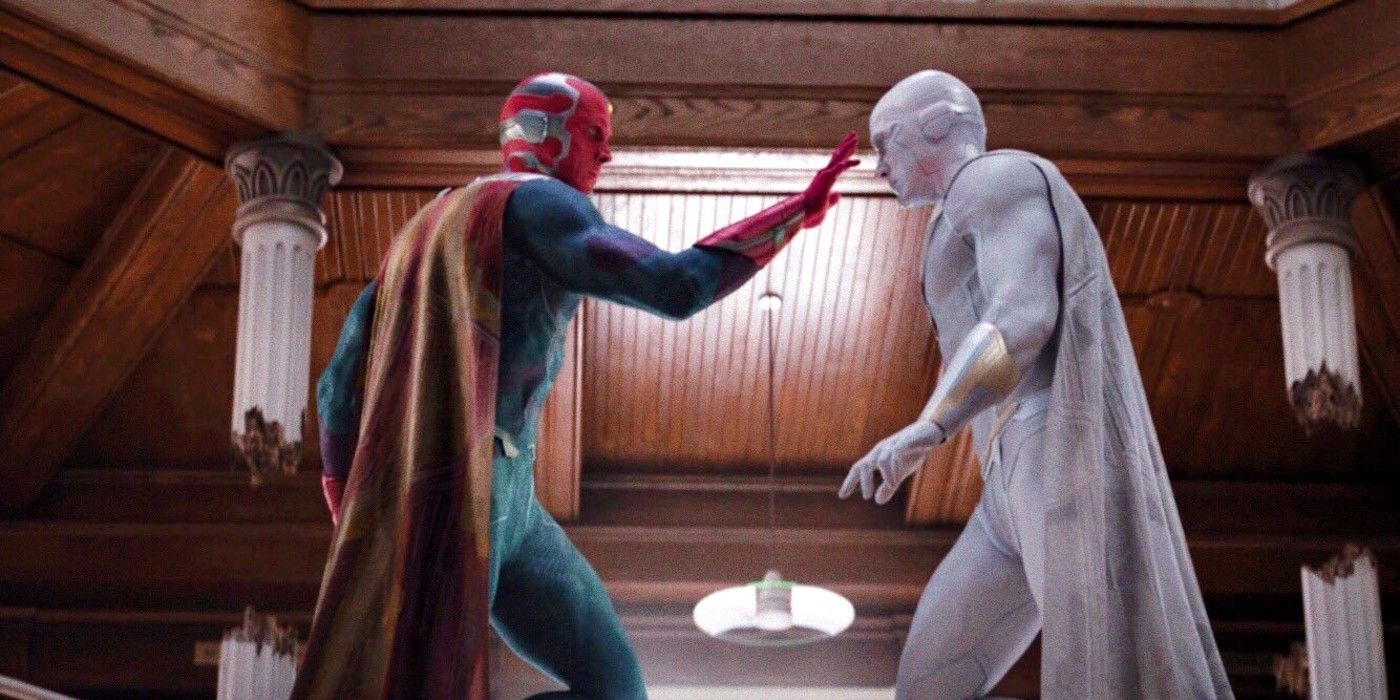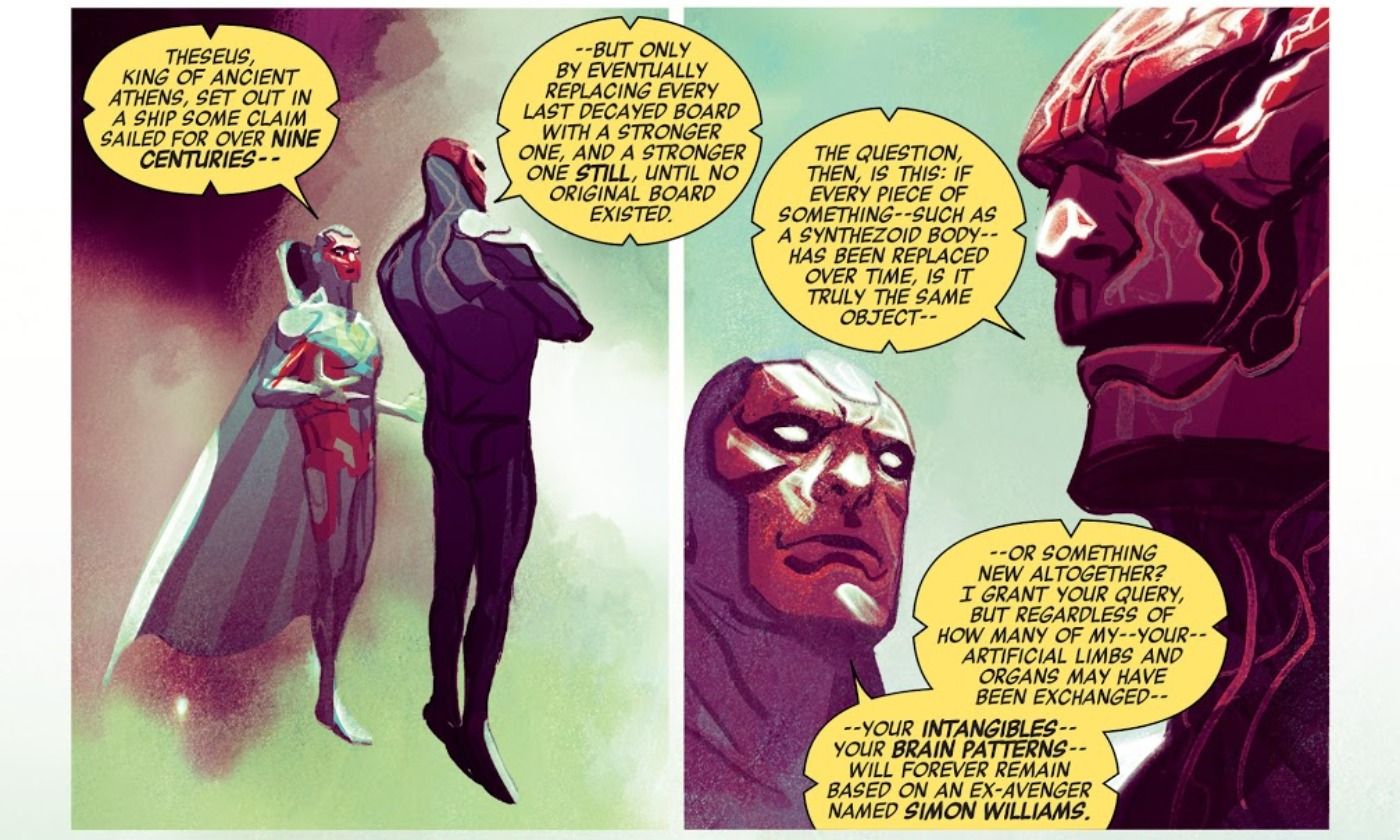WandaVision's "Ship of Theseus" moment made a lot more sense in the comics. The MCU is expanding at a prodigious rate, with Marvel Studios taking advantage of the opportunities offered by Disney+. To date, though, there's still been nothing quite like WandaVision, the first MCU TV series to come out on the streaming service. Somehow WandaVision was both a superhero sitcom and an exploration of Wanda Maximoff's grief - and, when two versions of Vision went head-to-head, their battle was resolved not with brawn but with logic.
To be fair, it was just how you'd expect two genius-level artificial intelligences to resolve their differences; with a logic puzzle. Vision and the reborn White Vision discussed the Ship of Theseus, which they described as a "thought experiment... in the field of metaphysics." The Ship of Theseus is an artifact in a museum, and over time the wood rots and is replaced. If all the wood has been replaced, is it still the Ship of Theseus? And if the removed planks were restored and reassembled, would they be the Ship of Theseus? "Neither is the true ship," White Vision concluded. "Both are the true ship." By this logic, neither of the two Visions were truly the original - but, paradoxically, both were. Unfortunately, the problem with this logic was that White Vision was literally the reconstructed original synthezoid, while the Vision who had been living in Westview was a construct created from Scarlet Witch's mind - who did not, in reality, exist at all. The Ship of Theseus analogy may have sounded logical, but it didn't really make any sense.
WandaVision's "Ship of Theseus" moment is more than just a metaphysical conundrum, though - it's also an Easter egg. In 2016's Avengers #6, by Mark Waid and Mike del Mundo, two alternate versions of Vision stood face-to-face. This encounter was a result of time travel, with the Vision of the distant future - claiming to hail from the very end of time - having traveled back as part of a time loop he vaguely recalled. "You are me," the Vision of the present day observed, "having lived to the end of time. It is... disconcerting to learn that I am destined to outlive all whom I know and love." The future Vision responded by pointing to the "Ship of Theseus," but he posed the question straight; if a synthezoid body has been replaced over time, is it truly the same object or rather something completely new?
The analogy is broadly the same, but there's one crucial difference; Mark Waid played it straight in Avengers #6, because the two different ships - the original and the one that has had every single part replaced - correspond perfectly to the two Visions. What's more, in the comic the Visions do not attempt to reach a conclusion; the logic puzzle is of interest to them, but they are swiftly distracted by needing to rally the Avengers against the forces of Kang the Conqueror, whom they were attempting to defeat.
The MCU's approach to the "Ship of Theseus" works on the surface level, simply because there are multiple versions of Visions. But the parallels don't stretch far enough, and the logic becomes highly questionable; what's more, the very fact the Visions use this conversation to initiate action suggests they believe they have solved the paradox. "Well, then, we are agreed," Vision declares - but they're only agreed on the paradox itself, and have not resolved it. When it comes to the Ship of Theseus, Marvel Comics played it better than WandaVision.


